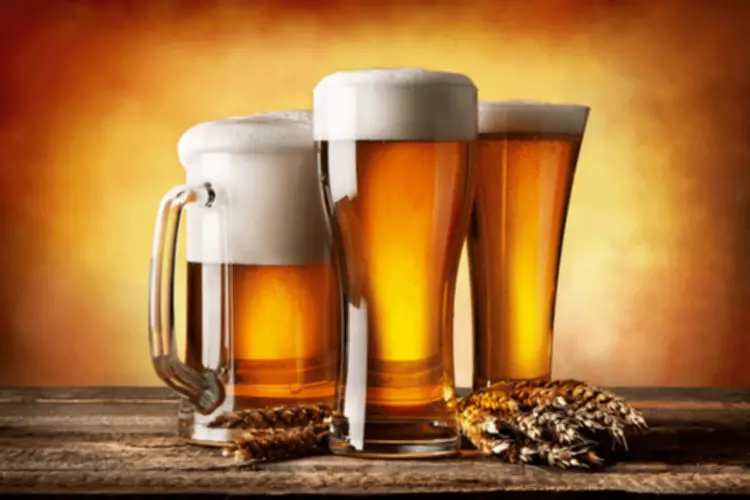You may have a list of people you want to make amends to personally. And it can be intimidating to be uncertain about how the other person will react. Set on 50 rolling acres in the Scottish countryside, they offer bespoke, discreet treatment for alcohol and drug addiction with holistic healing. For your apology to truly count, you will want to take the time to fully address all aspects of the pain inflicted, the nature of your addiction, and your pledge to do better. You should also make sure to express how much you value your relationship with that person, and that you want to make sure you do not lose them.

Making Living Amends In 12 Step Recovery
Facing and accepting this will be difficult, but incredibly important in righting any wrongs, helping them to find closure, and helping yourself to heal. When addiction fuels behavior, the outcome is often far from ideal. Here are some examples of how to start making amends, based on behavior/event type. Every event, and every person, is unique, but here are some basic examples of what you might say when first attempting to make amends. Making amends with the people in your life may take weeks, months, or even years to accomplish, but it’s well worth the time and effort to get it done. Making amends is not the same thing as simply making an apology.1 An apology expresses the fact that you are remorseful for your behavior and you regret the decision(s) you made to hurt a person.
Amends in the 12-Step Addiction Recovery Process
We are not tied to the old behaviors of our disease, or to our character defects. Although it sounds lofty, there are realistic, achievable ways to implement examples of making amends. If we want to be forgiven, we have to be patient, because it may not come today, tomorrow or the next day. We likely promised to sober up in the past, only to revert to alcohol abuse or another drug of choice.

Committing to Family Therapy
- If you wrecked a friend’s car, you should total the damage to see what you owe them to repair it.
- Before and after making amends, it’s important to remember why we’re doing it in the first place.
- Another person’s ability to accept your actions may be on a very different timeline than your recovery process.
- The letter serves as a perfect cautionary tale for Step 9 of recovery.
- Making Amends with Others has positioned itself in the public eye to a degree that many of the other eleven steps haven’t.
- When making amends in recovery, you admit past wrongdoings and align your values and your actions.
It is also best to have your sponsor or spiritual advisor guide you through this part of the 12 steps. There are certain instances where making amends may not be safe or may cause more harm than good. Sometimes, you may not receive an expected response, and you may not be forgiven.
Making amends means apologizing but also goes one step further—doing everything in your power to repair the damage, restore the relationship, and/or, replace what you took. If you’re writing a letter, whether sending or sharing it in person, living amends spend some time reflecting on and sharing the actions you’re taking to redress the wrong(s) done. Making amends requires the individual to correct their mistake. This action can demonstrate the person’s new way of life in recovery.
A Study of Step 2 of AA and Al-Anon’s 12 Steps – Verywell Mind
A Study of Step 2 of AA and Al-Anon’s 12 Steps.
Posted: Mon, 19 Feb 2024 08:00:00 GMT [source]
Should I Work on Step Eight Alone?
Even though you may not know your creditors personally, these amends are part of your 8th and 9th steps. Talk with your sponsor about setting up a timeframe for financial amends. Perhaps while you were in active addiction, you betrayed your loved one by stealing money from them. Now is your chance to apologize for that behavior and repay them.
Addiction Treatment Programs
- Step Nine can leave you emotionally exhausted; it’s a difficult step to navigate.
- When you make a real effort to change your past behaviors, you need to make the initial move in repairing broken relationships.
- Take action to correct past mistakes—for example, paying someone back.
- To demonstrate your amends, you would show how you have changed your behavior by being present for your spouse or child, keeping any promises you make, and showing them you can be reliable.
Talk to our recovery specialists today and learn about our integrated treatment programs. You can write down every instance where your actions related to substance abuse resulted in harm to another person. For example, if you stole money you should write down from whom and how much.
- For many who lived in addiction, apologizing was a regular habit.
- The process of making amends is not about us fixing everything—that comes in time and from going to meetings, attending to our recovery and cultivating a relationship to a Higher Power.
- The problem with that is that it’s impossible to correct your mistakes if you don’t confront them.
- The goal of the program is to improve yourself and make strides to be a better person for yourself and your loved ones alike while also remaining sober.
Guilt and shame anchor people to their past and trap them in old ways that prevent them from growing and moving on with their lives. By tackling step nine, recovering alcoholics can be freed from their past, including addiction. It is a more common experience than people think and there are many support groups and options available to help you fully heal. Landmark Recovery provides drug and alcohol recovery centers that help addicts take the first steps towards achieving and maintaining sobriety. Our therapy programs help patients to understand and cope with past mistakes with the eventual goal of leading a happy, fulfilling life that is substance free.
The Value of Recovery Alumni Programs
Well, the difference lies in the effort put behind each action. A sincere apology is a necessary step for sure, but an apology by itself is not enough to undo the pain and heartache that one’s addiction can cause. Making amends is a way to for the individual in addiction recovery to work towards an achievable goal that helps to restore faith and goodwill to people they inflicted pain towards. There are direct ways to make amends, such as fulfilling loan agreements, repairing broken property, or any number of kind acts. The most important part of making amends to someone is to alter your behavior and actions to become beneficial to the person you inflicted harm against, not simply apologizing. Taking the steps and making the commitment to your actions helps those in addiction recovery separate from the disease of addiction.

